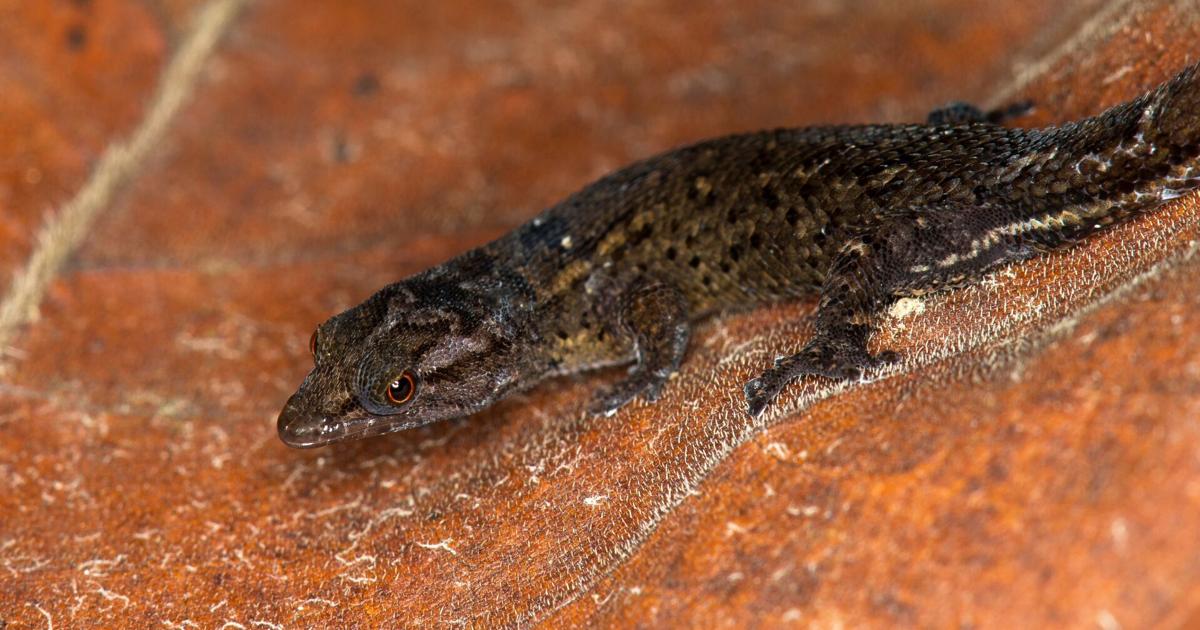Dr. Alondra M. Diaz Lamero, Assistant Professor in the Department of Biology at the University of Puerto Rico (UPR) Mayaguez Campus, led the research work that promoted the discovery of a new species of Puerto Rican reptile.
It is a mountain and sea gecko, also known as a half-moon gecko or tegu, and is the tenth species that can be described in the territory of Puerto Rico.
“We are very excited to add a species that indicates a new organism with the potential for further research. There is still much to be explored and there is scope for discovery,” the researcher said in written statements.
Díaz Lameiro named the new species Sphaerodactylus verdeluzicola, inspired by the Verde Luz song.
The discovery was published in the prestigious scientific journal Ichthyology and Herpetology and represents the first species of reptile to be described to animals in Puerto Rico in more than 85 years.
The new species was monitored in 2012, while Díaz Lamiro was a master’s student, under the tutelage of physicians Juan Carlos Martinez Cruzado and Taras K. Alexic, both professors of biology at UPRM.
“We were in Rincon looking for Sphaerodactylus grandisquamis because we wanted to know how these small animals got to the islands of the Mona Channel (Muna and Desicho). This is how we realized this small animal that does not fit the descriptions of other species,” he narrated.
This discovery stimulated the scientist for further research.
“We took DNA samples, compared them to other species, and realized they had physical and genetic differences to characterize them as a new species,” he added.
The process, led by Diaz Lamero, took place in collaboration with scientists from the Mayaguez and Rio Piedras campuses of the UPR, as well as from the University of Central del Caribe, the University of Auckland, Marquette University, and Sam Houston State University, among others.
He emphasized that “it was an effort with a group of people who made their scientific contribution from their field of expertise, and in this way, we have crafted an article with a very detailed description of the species.”
In 2016, another group of this species was discovered in Ottoado.
“We have an idea of how a species works because we know other individuals in the same group, but we don’t know the specifics of how they reproduce, how many eggs they lay, their behavior and physiology,” he explained.
The plan of the group of scientists led by Diaz Lamero is to hunt for more aggregations of Sphaerodactylus verdeluzicola, a brown reptile that is barely an inch long, lives on the ground and hides itself well.
“So far the two groups we studied have fairly stable numbers and are in protected environments. If we find new populations, it opens doors for us to include students in this research,” he added.
The habitat of this Puerto Rican species is thick and wet leaf litter.
On the other hand, the researcher highlighted the importance of local science and the ongoing biodiversity surveys conducted in Puerto Rico by scientists, students and citizens.
“Knowing and understanding our flora and fauna is an essential step in managing and protecting our precious resources. Especially, to prevent the loss of the unique species that give colour, sounds and character to our beautiful island.”





